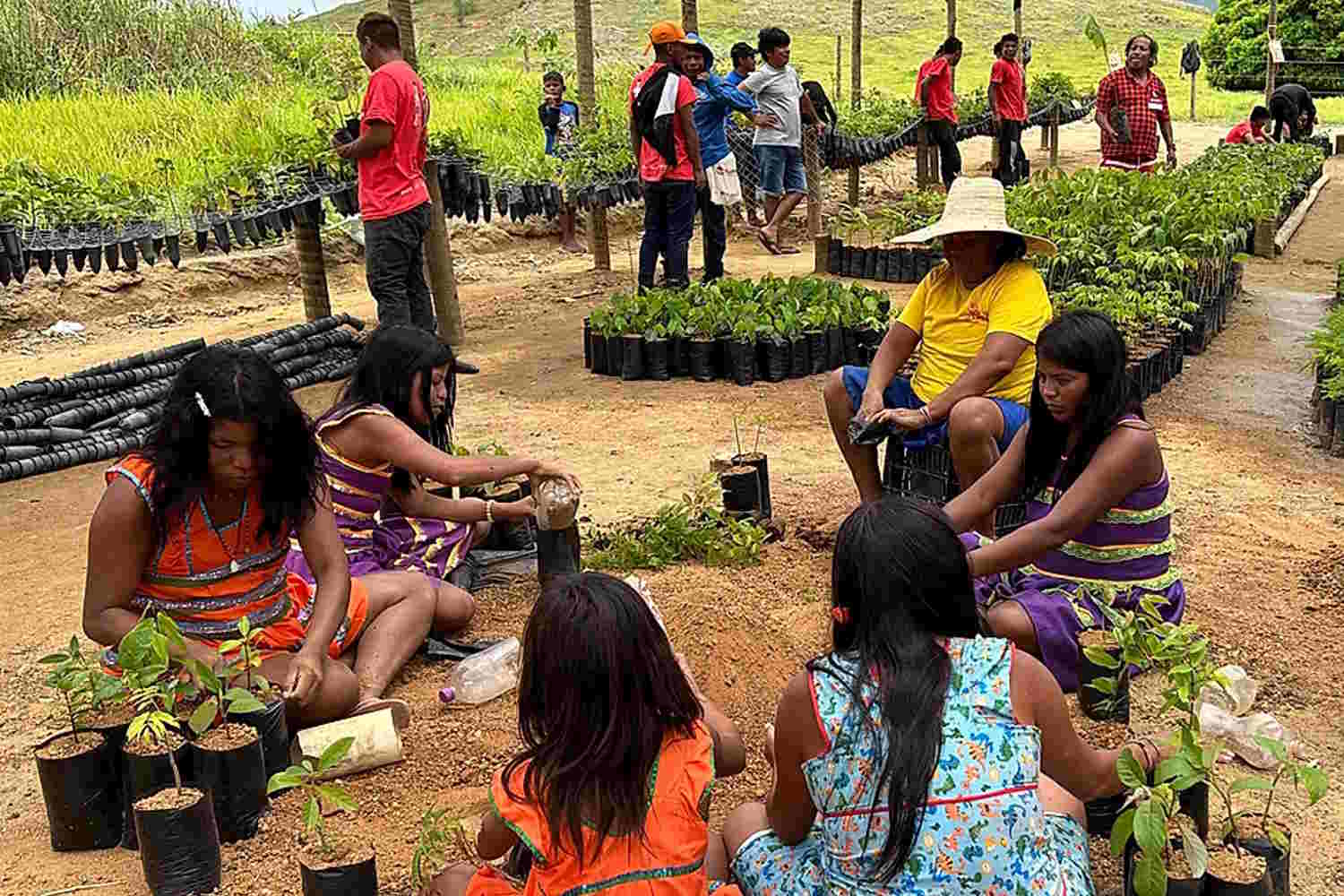Loaded with bags of seeds, seedlings and agricultural kits, the villagers began sowing the land with native species. And the recovery of the Atlantic Forest has been extraordinary

@hamhi
In north-eastern Minas Gerais, near the Bahia border in Brazil, the Atlantic Forest is being revived by the Tikmu’un-Maxakali Indigenous community. Forcibly displaced from their native land centuries ago, the Tikmu’un-Maxakali have regained some of the land and are gradually taking back the forest, and their culture.
370 ha of forest recovered and 150 ha of agroecological gardens
A year and a half ago, 30 local community members with bags of seeds, seedlings, and farm kits began planting across the Maxakali Indigenous Land and other lands in their villages.
In this relatively brief time, they have restored 370 acres of indigenous Atlantic Forest and cultivated 150 acres of agroecological gardens, growing vegetables and fruits. Bit by bit, the Tikmu’un-Maxakali are striving to preserve what remains of the Atlantic Forest, a biome covering approximately 15% of the land of Brazil, reaching 17 states, and housing 72% of the population of Brazil.
The atlantic forest’s pivotal role and drastic decline
The Atlantic Forest provides essential services including water supply, agriculture, fisheries, electricity, and tourism. However, the statistics from SOS Mata Atlântica Foundation and the National Institute for Space Research (Inpe) reveal that only 24% of the original forest cover remains intact. Worse, only 12.4% of the mentioned area is composed of mature and well-preserved forests.
The Hãmhi – Terra Viva PProject: Indigenous knowledge meets scientific collaboration
This restoration process is part of the Hãmhi – Terra Viva Project, a project that engages Indigenous and non-Indigenous researchers, coordinated by the Opaoká Institute and supported by the Center for Environmental Operations of the Public Prosecutor’s Office of Minas Gerais.
This campaign takes place in small towns in municipalities of Santa Helena de Minas, Bertópolis, Ladainha, and Teófilo Otoni—one of the hottest regions of Brazil in recent years. Through their effort, these indigenous communities not only regain their cultural identity but also assist in defending a fragile but vital element of our world.
